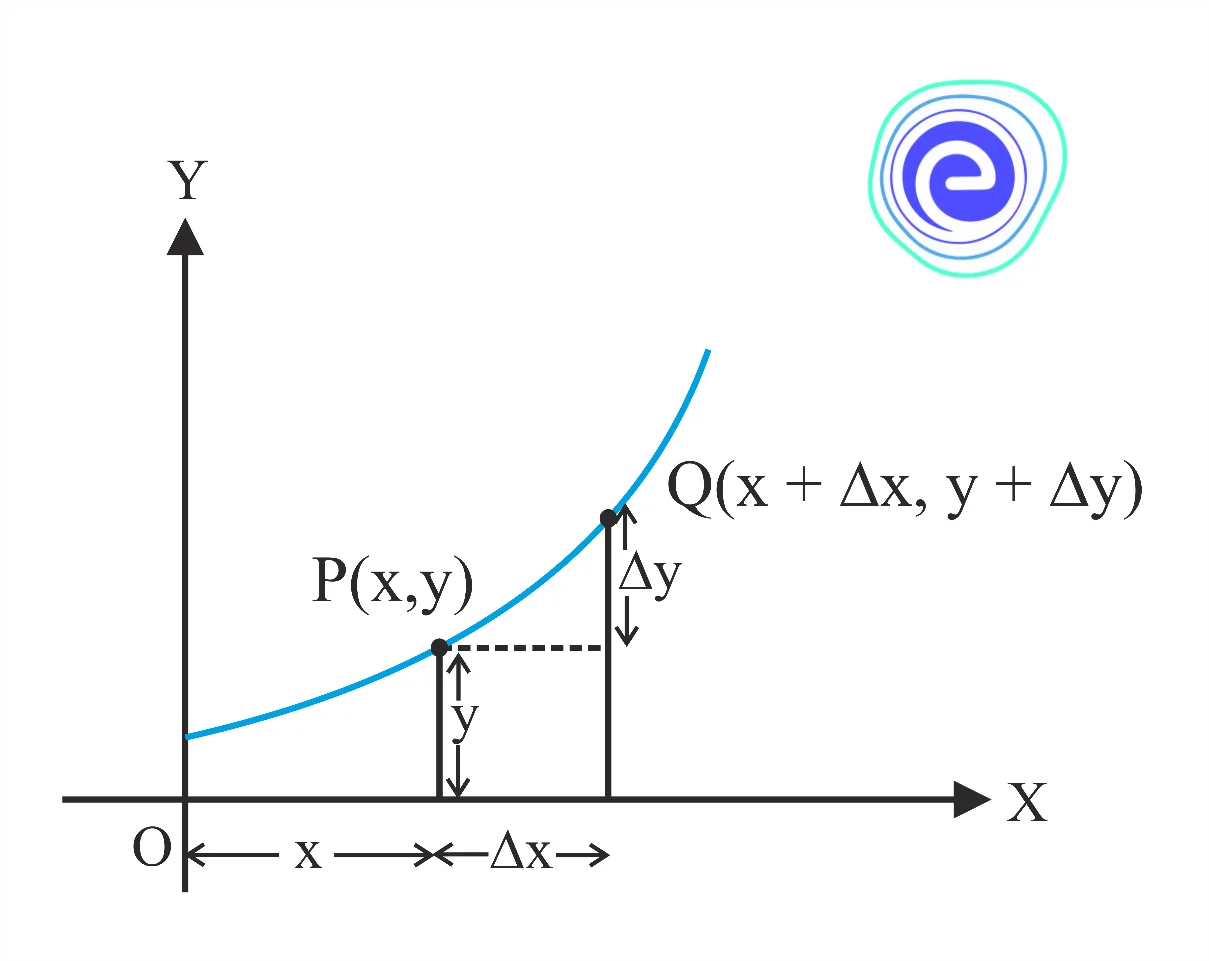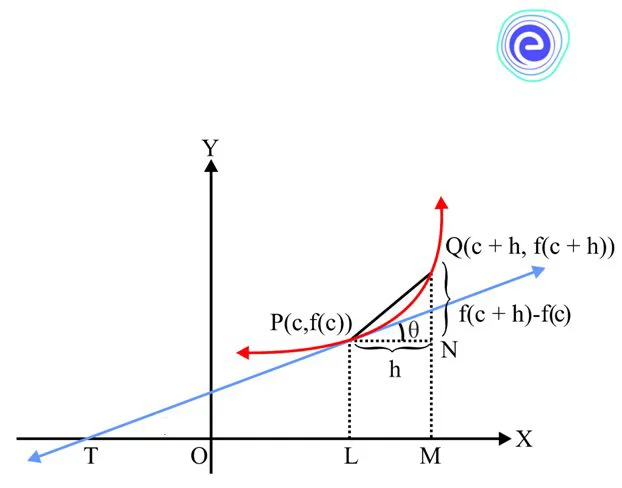- Written By
Swapnil Nanda
- Last Modified 23-01-2025
First Principle of Differentiation: Derivative as a Rate Measurer, Geometrical Interpretation of Derivative at a Point
First Principle of Differentiation: A derivative is the first of the two main tools of calculus (the second being the integral). It is the instantaneous rate of change of a function at a point in its domain. This is the same thing as the slope of the tangent line to the graph of the function at that point. It’s a crucial idea with a wide range of applications: in everyday life, the derivative can inform us how fast we are driving or assist us in predicting the stock market changes. In this article, we will learn to find the rate of change of one variable with respect to another variable using the First Principle of Differentiation.
First Principle of Differentiation
Suppose is a real valued function, the function defined by
wherever the limit exists is defined to be the derivative of at and is denoted by .
This definition of derivative is called the first principle of differentiation.
There are different notations for derivative of a function. Sometimes is denoted by or if , it is denoted by .
Further, derivative of at is denoted by,
Derivative as a Rate Measurer
Let be a function of and let . Here, is the independent variable, and is the dependent variable on .
Let be a small change (positive or negative) in and let be the corresponding change in . Then, as the value of changes from to and the value of changes from to . So, change in the value of is given by,
or
Thus, we observe that due to change in , there is a change in . Therefore, due to one unit change in , the corresponding change in is .
This is known as the average rate of change of with respect to .
As , we observe that .
Rate of change in with respect to .
[Using ]
[Using definition of first principleof differentiation]
Thus, measures the rate of change of with respect to .
i.e.,
Conclusion:
We can say that the derivative of a function is same as the rate of change of with respect to
Geometrical Interpretation of Derivative at a Point
Let be a differentiable function. Consider the curve .
Let be a point on the curve and let be a neighbouring point on the same curve. Then,
Slope of chord,
Taking limit as i.e. , we get,
( Slope of chord )
As , chord tends to the tangent to at point .
Therefore, from , we have
Slope of the tangent at
Slope of the tangent at i.e., , where is the inclination of the tangent to the curve at point with the −axis.
Thus, the derivative of a function at a point is the slope of the tangent to the curve at the point .
Derivative of Some Standard Functions From First Principles
- Derivative of linear functions
The derivative of a linear function is a constant, and is equal to the slope of the linear function.
For Example: Let
This is an equation of the straight line with slope and −intercept .
We can show using the first principle of derivative that
Consider
[, where is a constant].
Hence, If , then
- Derivative of is for any positive integer
By definition of the derivative function, we have
Using Binomial theorem,
Thus,
[On applying the limit]
Hence, , for any positive integer .
- Derivative of is .
Let
- Derivative of is .
Let
[Using the formula for ]
Solved Examples
Q.1. Differentiate with respect to from the first principle.
Ans: Given:
Q.2. Differentiate with respect to from first principle.
Ans: Given:
Q.3. Differentiate with respect to from first principle.
Ans: Given:
Q.4. Differentiate from first principles.
Ans: Given:
From the definition of first principles, we have,
Q.5. Differentiate from first principle.
Ans: Given:
From the definition of first principles, we have,
Q.6. Differentiate from first principle.
Ans: Let
From the first principle
Hence,
Q.7. Differentiate from first principle
Ans: , then
Using the first principle of differentiation,
Hence,
Summary of First Principle of Differentiation
This article explains the first principle of differentiation which states that the derivative of a function with respect to and it is given by . The derivative of a function is same as the rate of change of with respect to . We also learnt that the derivative of a function at a point is the slope of the tangent to the curve at that point. Further, some standard formulas of differentiation (or derivatives) of trigonometric and polynomial functions were derived using the first principle.
Frequently Asked Questions (FAQs)
Q.1. What is the first principle of differentiation?
Ans: The first principle rule of differentiation helps us evaluate the derivative of a function using limits. According to this rule, the derivative of the function with respect to is given by:
Q.2. What is ?
Ans: is an operation which indicates the differentiation of with respect to .
Q.3. What are the three rules of differentiation?
Ans: The three rules of differentiation are
Constant rule: The constant rule states that the derivative of a constant is zero i.e. , where is a constant.
Power rule: , where is any real number.
Sum and Difference Rule: If then
Q.4. Does differentiation give gradient?
Ans: The formula to find the differentiation of the function, at any point on its curve is given by , which is also the formula to find the gradient of the curve the point .
For Example: The slope of the curve at the point is evaluated as follows:
And, at , we have
Hence, the slope of the given curve at the given point is .
Thus, the slope of a curve at a point is found using the first derivative.
Q.5. What is the derivative of ?
Ans: Let
Then,
Hence, the derivative of is .
We hope that this detailed article on the First Principle of Differentiation was helpful. If you have any doubts, then do let us know about it in the comment section below. Our team will get try to solve your queries at the earliest.










































